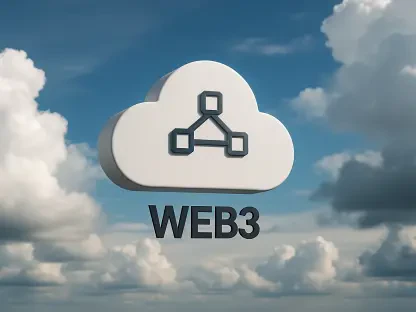Maryanne Baines, a respected figure in Cloud technology, shares her insights on the current and future trends in SaaS development and outsourcing. With her extensive background in evaluating various cloud providers and tech stacks across industries, Maryanne offers valuable perspectives on the evolution of software delivery, the role of outsourcing in SaaS development, and the skills required for success in 2025.
How would you describe the overall landscape of SaaS development in the U.S. by 2025?
The SaaS development landscape in the U.S. by 2025 is incredibly dynamic and expansive. SaaS has firmly cemented itself as the preferred model for software delivery across virtually all sectors. This preference stems from its ability to offer scalable, flexible, and cost-efficient solutions that can be tailored to meet diverse business needs. The SaaS market is driven by rapid technological advancements, a high demand for cloud solutions, and an increasing focus on user experience, security, and integration capabilities.
What are the key factors that have contributed to the dominance of SaaS as the preferred model for software delivery?
Several factors contribute to the dominance of SaaS. Firstly, the scalability that SaaS platforms offer is unparalleled, allowing businesses to adjust to market demands without significant infrastructural changes. Secondly, SaaS delivers cost efficiencies by reducing the need for extensive on-premises hardware and maintenance. Lastly, the ease of updates and seamless integration with other software tools make SaaS highly appealing, as it ensures continuous improvement and compatibility with evolving business processes.
How has the trend of outsourcing SaaS development evolved over the past few years?
Outsourcing SaaS development has evolved from being merely a cost-cutting measure to a strategic necessity. Initially, companies outsourced development to save on labor costs. However, now they see it as a way to gain competitive advantages by accessing specialized skills and accelerating innovation. This shift highlights the importance of agility and the need to stay ahead in a rapidly changing tech landscape.
What are the main reasons U.S. companies are now turning to outsourced SaaS development?
U.S. companies turn to outsourced SaaS development for several reasons. Primarily, outsourcing offers access to a global pool of specialized talent that may not be available in-house. It also allows companies to accelerate time-to-market by leveraging the expertise of teams that are well-versed in the latest technologies and methodologies. Additionally, outsourcing helps companies remain agile and responsive to market changes without the burden of long-term commitments.
What are the pros and cons of working with freelance developers for SaaS projects?
Freelance developers can be an excellent choice for specific, specialized tasks. The pros include flexibility, cost-effectiveness, and the ability to quickly bring in niche expertise. However, the cons involve potential issues with availability, capacity, and consistency. Freelancers may not always be readily available for long-term engagements, and managing them requires diligent coordination and oversight.
How do agencies compare in terms of delivering SaaS projects, and what are their main advantages?
Agencies bring a structured approach to delivering SaaS projects, offering comprehensive services that cover various development aspects. Their main advantages include having dedicated project managers, established processes, and a robust support system. Agencies can handle complex and large-scale projects more efficiently due to their coordinated teams and resource availability. They provide a safety net for continuity and quality assurance, which is crucial for high-stakes projects.
Why has quality overtaken cost as the primary concern for companies outsourcing SaaS development?
Quality has become paramount because SaaS applications now play crucial roles in business operations and customer experience. Companies have realized that investing in high-quality, reliable software leads to better business outcomes and customer satisfaction. Low-quality software, on the other hand, can result in downtime, security breaches, and a poor user experience, which can be far more costly in the long run.
What specific quality and security practices are outsourced developers expected to follow in 2025?
By 2025, outsourced developers are expected to adhere to stringent quality and security practices. This includes implementing robust security protocols, regular vulnerability assessments, and ensuring compliance with industry standards such as GDPR, HIPAA, and others. Quality practices involve rigorous testing, continuous integration and deployment (CI/CD) processes, and maintaining high code quality to ensure that software is reliable, scalable, and user-friendly.
Which industries are leading in SaaS spending, and why?
Industries like financial services, healthcare, retail, and technology are leading in SaaS spending. Financial services need custom platforms and real-time analytics for compliance and customer satisfaction. Healthcare requires secure, compliant solutions for patient data and telehealth services. Retail focuses on integrations for customer engagement and operational efficiency, while technology companies push for innovation and rapid deployment to stay competitive.
Can you provide some examples of how different industries are using SaaS solutions to address their unique challenges?
Certainly. In financial services, banks are commissioning AI-powered fraud detection systems and real-time reporting dashboards to meet compliance and customer demands. Retailers are adopting SaaS for features like curbside pickup and augmented reality (AR) try-ons to enhance customer experiences. Healthcare providers are using custom EHR overlays and HIPAA-compliant telehealth solutions to improve patient care and streamline operations. These tailored SaaS applications enable industries to address specific challenges effectively.
What are the most sought-after skills for SaaS developers in 2025?
In 2025, SaaS developers need a diverse skill set that includes cloud architecture, AI and automation integration, low-code development, and security practices. They must be adept at using tools like AWS, Azure, and Google Cloud, understand machine learning APIs, and know how to leverage low-code platforms for rapid development. Moreover, they should have a strong grasp of security protocols and compliance requirements to ensure the reliability and integrity of their applications.
How important is domain knowledge and business sense for a SaaS developer?
Domain knowledge and business sense are incredibly important for SaaS developers. Understanding the specific needs and challenges of the industry they are working in allows developers to design and implement solutions that truly meet the client’s needs. Business sense helps developers prioritize features and enhancements that deliver the most value, ensuring that the software not only functions well but also contributes to the company’s strategic goals.
Do you have any advice for our readers?
My advice is to always prioritize quality and security in your SaaS projects. While it might be tempting to cut costs, investing in high-quality development will pay off in the long run by preventing issues and ensuring customer satisfaction. Also, stay adaptable and continuously update your skills to keep pace with technological advancements and industry trends. Be proactive in understanding the specific needs of your industry and leverage specialized outsourcing where it can provide a strategic advantage.









